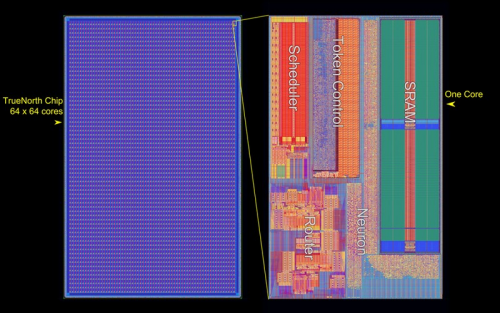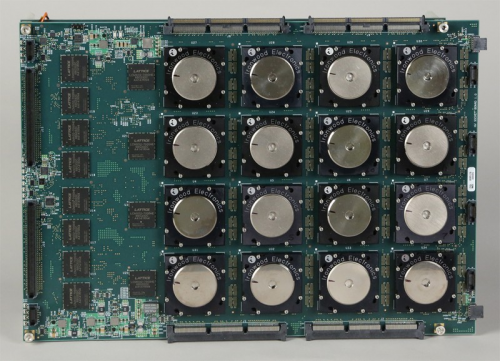IBM creates the most advanced brain-like chip to date
Just how far are we from creating a chip that simulates the functions of a human brain with the efficiency of a real human brain? Or better yet, how close are we to achieving that? IBM’s new breakthrough tells us that they’re one step closer to create a complete neuromorphic computer chip.
What’s TrueNorth?
TrueNorth is the name IBM’s researchers gave to the chip they have created, and wait until you hear the numbers: it has 1 million programmable neurons and 256 million programmable synapses across 4096 neurosynaptic cores, and all these are built on Samsung’s 28nm process technology which makes use of 5.4 billion transistors (most than in any other chip IBM has created). Of course, the real numbers are still quite far from these since a real human brain has 100 billion neurons and more than 100 trillion synapses- but even though this sounds discouraging, you should know that a chip like this could be used to run devices which in turn could predict tsunamis, monitor oil-spills or enforce shipping lane rules, as Dharmendra Modha (IBM principal investigator and senior manager) said in an interview. What’s really important to note here however is that TrueNorth consumes only 72 milliwatts at max load which translates to 400 billion synaptic operations per second per watt. In other words, True North is about 176.000 times more efficient than a modern CPU performing brain-like functions and 769 times more efficient than a modern neuromorphic chip with 48 chips, each with 18 cores.
TrueNorth is the result of a project called SyNAPSE that begun 6 years ago at IBM Research and is funded by DARPA (US Defense Advanced Research Projects Agency). In 2011, the scientists at IBM created a prototype chip that had only 256 programmable neurons, 262,144 programmable synapses and 1 neurosynaptic core. Comparing those numbers to TrueNorth you can see that the leap IBM has made is undoubtedly a huge one. In addition, IBM researchers created the Corelet programming language and Compass simulator in 2013 which let you program and simulate your own neuromorphic programs.
This new chip consists of 4096 neurosynaptic cores arranged in a 64x64 grid. Each core is self-contained and has 256 inputs (axons), 256 outputs (neurons), a vast amount of SRAM for storing the data for each neuron and a router that allows for any neuron to transmit to any axon up to 255 cores away. The flow of information follows the way of neural spikes, from axons to neurons, regulated by the synapses located between them. In contrast to almost all computers, the Von-Neumann architecture is not followed here. This allows TrueNorth to bypass performance limitations and increase efficiency so that the computational workload of complex operations is not required. For instance, if you had a robot using common microprocessors walking toward a pillar, it would depend on image processing and use loads of computing resources and power in order to avoid colliding with it. On the other hand, if we were to use TrueNorth’s chip architecture, the collision would be avoided much easier since the robot would sense the pillar. Another advantage of the new synaptic chip is that it doesn’t run all the time but only when it needs to, unlike traditional chips which end up producing more heat and consuming more energy.
TrueNorth can be used in a symmetric multiprocessor system, and IBM took advantage of that immediately. A 16-chip system was created that has 16 million neurons and 4 billion synapses, allowing the researchers to set new goals: integrating 4096 chips in a single rack with 4 billion neurons and 1 trillion synapses. For reference, 256 million synapses use 1//10th of a watt, therefore 1 trillion synapses will only use 4kW of power.
As Modha said, “We are not there yet. Indeed, TrueNorth is a direction and not a destination!”. This really sums up everything- TrueNorth flags a turning point in the history of computing.
Here is the paper that was published regarding TrueNorth with more technical details for those who want to be further informed, and here is the official page for IBM’s TrueNorth.
A nice infographic provided by IBM can be viewed here too.


